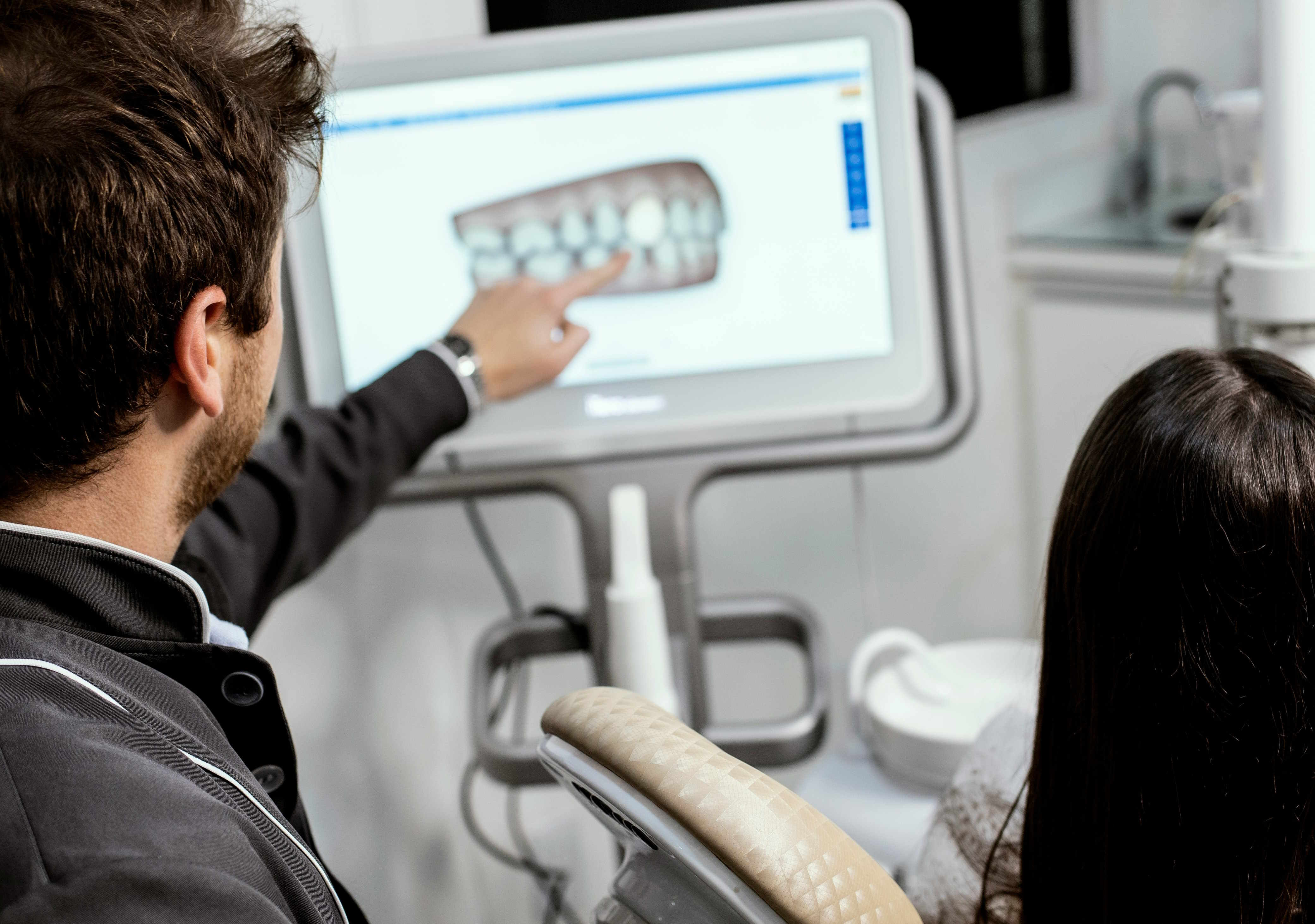Advancements in Minimally Invasive Dental Implant Procedures
Dental implants have revolutionized tooth replacement, offering patients a permanent solution that looks and functions like natural teeth. With recent advancements in dental technology, implant procedures have become less invasive, more comfortable, and offer faster recovery times. Understanding these modern approaches can help patients make informed decisions about their dental health.

Dental implants represent one of the most significant advancements in modern dentistry, providing a long-lasting solution for missing teeth that closely mimics natural tooth function and appearance. Traditional implant procedures have evolved significantly, with new techniques focusing on minimizing surgical intervention while maximizing results. These innovations have made dental implants more accessible and appealing to patients who might have previously been hesitant due to concerns about surgical complexity or recovery time.
What Are Minimally Invasive Dental Implant Techniques?
Minimally invasive dental implant procedures utilize advanced imaging technology and specialized surgical tools to place implants with smaller incisions and less disruption to surrounding tissues. Unlike traditional methods that often required extensive flap surgery (where gum tissue is cut and folded back), these newer approaches can sometimes be performed without flaps or with very small incisions. Computer-guided implant placement allows dentists to plan the exact position of each implant virtually before the procedure, resulting in greater precision and reduced surgical time.
These techniques often include flapless surgery, immediate loading (where a temporary crown is placed during the same appointment), and the use of smaller-diameter implants in certain situations. The primary goal is to reduce trauma to oral tissues, minimize post-operative discomfort, and accelerate healing time while still achieving optimal implant integration.
Benefits of Less Invasive Dental Implant Procedures
The shift toward less invasive dental implant techniques offers numerous advantages for patients. First and foremost is reduced post-operative discomfort and swelling, as these approaches cause less trauma to gum tissue and bone. Recovery times are typically shorter, allowing patients to return to normal activities more quickly. Many patients report experiencing only minor discomfort that can be managed with over-the-counter pain relievers.
Additionally, minimally invasive procedures often require fewer visits to complete treatment. In some cases, implants can be placed and fitted with provisional restorations in a single appointment, eliminating the traditional months-long waiting period between implant placement and restoration. This streamlined approach not only saves time but can also reduce the overall cost of treatment by decreasing the number of required dental visits.
Minimally invasive techniques may also preserve more natural bone and gum tissue, potentially resulting in better esthetic outcomes, especially in the visible areas of the mouth. This tissue preservation can contribute to more natural-looking results and better long-term implant health.
Essential Information for Dental Implant Patients
Before undergoing any dental implant procedure, patients should understand several key factors that influence treatment success. First, proper candidate selection remains crucial even with less invasive techniques. Patients need adequate bone volume and density to support implants, though some newer methods can work with less bone than traditional approaches. Good oral and general health are also important prerequisites, as conditions like uncontrolled diabetes or periodontal disease can compromise implant success.
Patients should also have realistic expectations about the treatment timeline. While some minimally invasive procedures offer faster completion times, the biological process of osseointegration (where the implant fuses with the jawbone) still requires time. Even with immediate loading protocols, the final restoration typically isn’t placed until the implant has fully integrated with the bone, which usually takes several months.
Maintenance requirements remain the same regardless of implant technique. Patients must commit to excellent oral hygiene practices and regular dental check-ups to ensure the longevity of their dental implants. Without proper care, implants can develop complications such as peri-implantitis, an inflammatory condition that can lead to implant failure.
Advanced Technologies Enabling Minimally Invasive Implants
The evolution of minimally invasive dental implant procedures has been made possible by significant technological advancements. Cone Beam Computed Tomography (CBCT) provides detailed 3D images of a patient’s oral anatomy, allowing dentists to identify optimal implant positions and avoid vital structures like nerves and sinuses. This precision reduces surgical risks and improves outcomes.
Computer-aided design and computer-aided manufacturing (CAD/CAM) technology enables the creation of surgical guides that direct the exact placement of implants according to the pre-surgical plan. This technology can reduce procedure time and increase accuracy, particularly beneficial for complex cases or when placing multiple implants.
Digital impression systems have replaced traditional messy impression materials in many practices, creating precise digital models for fabricating implant restorations. These systems improve patient comfort during the impression-taking process and often result in better-fitting final restorations.
Cost Considerations for Modern Dental Implant Procedures
Dental implant costs vary significantly depending on several factors, including the number of implants needed, the complexity of the case, geographical location, and the dentist’s expertise. While minimally invasive techniques might seem more expensive initially due to the specialized technology involved, they can sometimes reduce overall costs by decreasing the number of appointments needed and potentially eliminating the need for bone grafting in some cases.
| Procedure Type | Average Cost Range (PLN) | Potential Additional Costs | Recovery Time |
|---|---|---|---|
| Traditional Dental Implant | 12,000-18,000 per tooth | Bone grafting (1,200-12,000 PLN) | 3-6 months |
| Computer-Guided Implant | 16,000-22,000 per tooth | 3D imaging (1,200-2,000 PLN) | 2-4 months |
| Same-Day/Immediate Load | 18,000-24,000 per tooth | None (typically all-inclusive) | 1-3 months |
| Mini Dental Implants | 4,000-10,000 per tooth | Often fewer additional costs | 1-2 months |
Prices, rates, or cost estimates mentioned in this article are based on the latest available information but may change over time. Independent research is advised before making financial decisions.
Most dental insurance plans in Poland provide only limited coverage for implant procedures, typically covering a portion of the cost up to a maximum annual limit. Patients should verify coverage with their insurance provider before proceeding with treatment. Many dental practices offer financing options or payment plans to help make implant treatment more affordable.
Choosing the Right Approach for Your Needs
Selecting the most appropriate dental implant procedure requires careful consideration of individual circumstances. Factors to consider include the number and location of missing teeth, the condition of remaining teeth, jawbone quality and quantity, overall health status, and budget constraints. While minimally invasive techniques offer many advantages, they aren’t suitable for every patient or situation.
Consultation with an experienced implant dentist is essential to determine the most appropriate treatment approach. Dentists with specialized training in implantology and experience with various implant techniques can provide personalized recommendations based on comprehensive examination and diagnostic imaging. Patients should feel comfortable asking questions about the dentist’s experience, success rates, and examples of similar cases they have treated.
Dental implants, regardless of the specific technique used, represent a significant investment in oral health and quality of life. With proper planning, skilled execution, and diligent maintenance, they can provide decades of comfortable function and natural-looking esthetics, making them a valuable long-term solution for tooth replacement.
This article is for informational purposes only and should not be considered medical advice. Please consult a qualified healthcare professional for personalized guidance and treatment.




